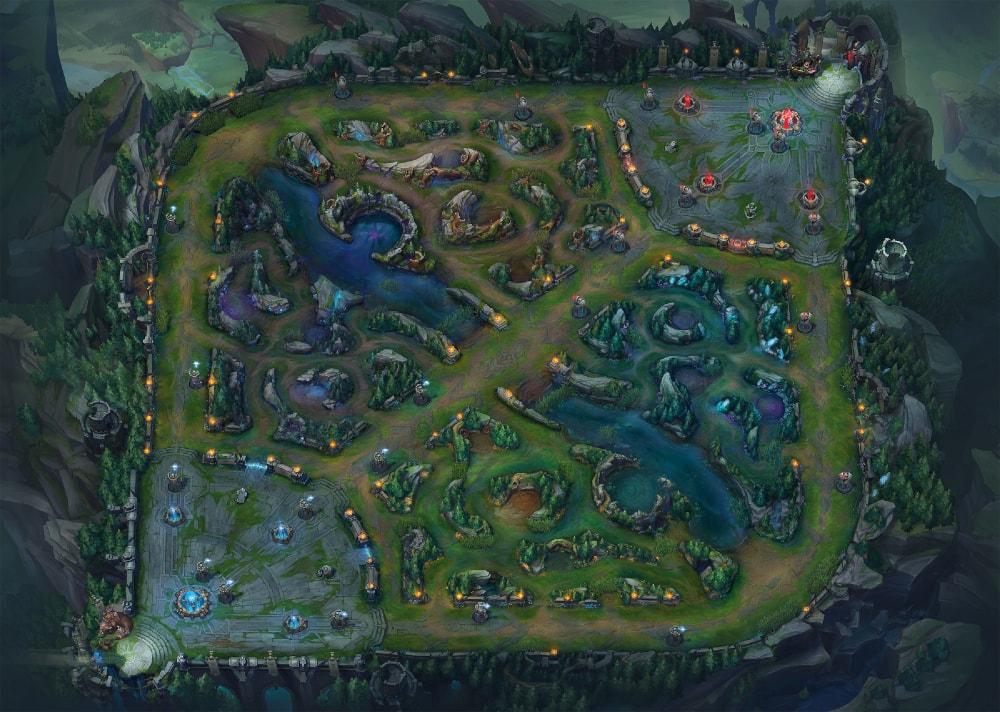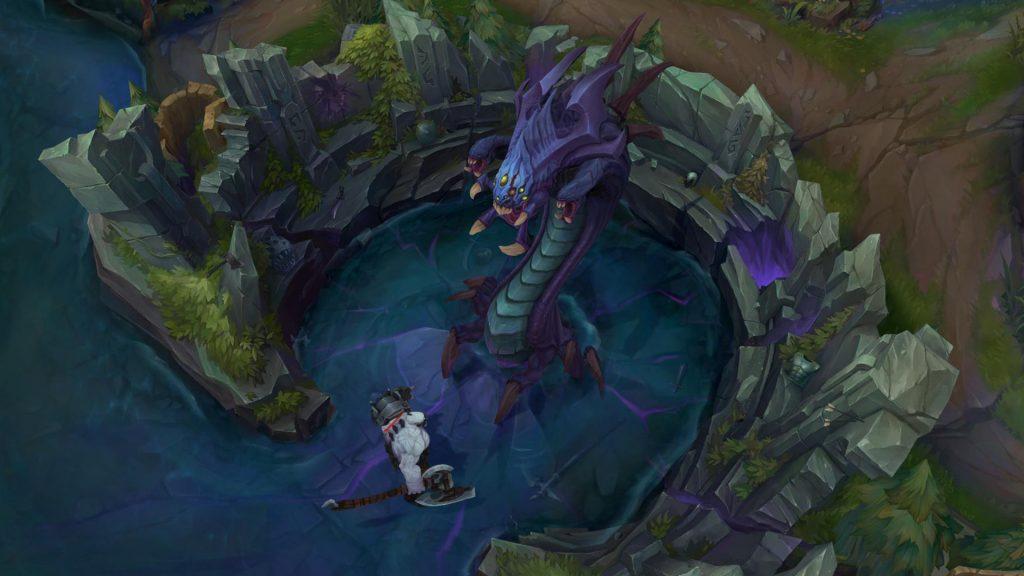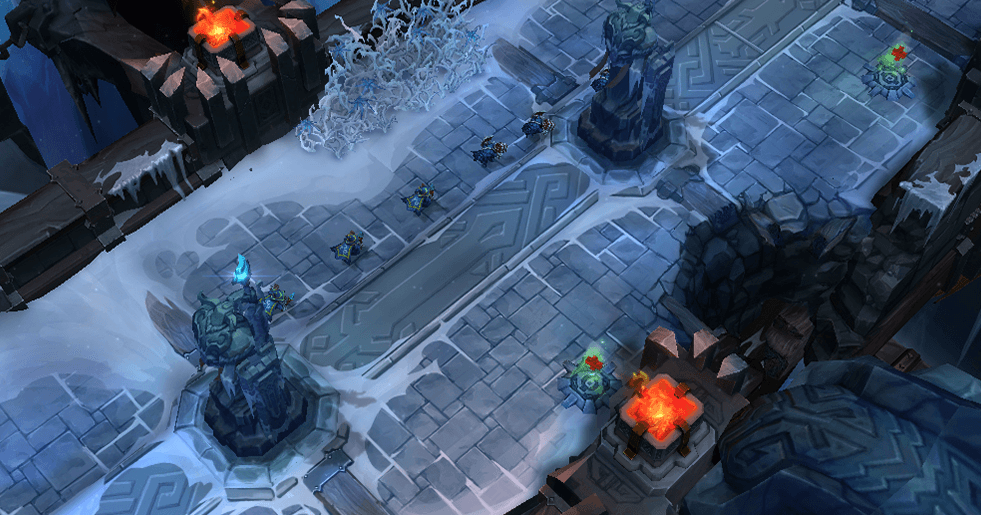A Guide to League of Legends Maps: Navigating the Fields of Justice
League of Legends is a game where players wage intense battles on diverse landscapes. From the traditional lane-split Summoner’s Rift, to the action-packed Howling Abyss, to the now-forgotten and outcast maps like Dominion and Twisted Treeline, maps are integral part to how League of Legends is played.
In the lore, the League of Legends maps are called the Fields of Justice and each requires different strategies and caters to a different style of play so that you’re never bored in the world of Runtererra — whether you want to learn the strategic depth of LoL or are just looking for some quick fun after work.
Exploring Summoner’s Rift
Summoner’s Rift is the primary battlefield in League of Legends. This is the classic LoL map and is the home to practically all competitive events, from climbing the ranked ladder to esports matches.
Teams win Summoner’s Rift by destroying the Nexus, which is the central structure for each team, which spawns the minions that travel through the lanes. To get to the Nexus, teams need to destroy at least one lane inhibitor and then both Nexus turrets (more on all that later).

Summoner’s Rift Lanes Explained
Summoner’s Rift is split into three lanes like the traditional MOBA maps: top lane, mid lane, and bottom lane. Each lane is equipped with two outer turrets (tier 1 and tier 2), and at the end there’s an inhibitor current guarding the — you guessed it — inhibitor.
Each lane caters to a specific role on the Rift. Top lane champions tend to be tanks or bruisers, who wage a 1-on-1 war, ready to Teleport into a fight when their teammates need them. Mid lane, being the center of it all, is home to playmaking champions — those who can roam top/bot to initiate ganks or who play a critical role in teamfights.
The bot lane is home to a but duo: a traditional AD carry champion (ADC) and their support. They are the closest to the Dragon — a key objective in the game — and play a huge part in controlling it.
Outside the Lanes: Neutral Objectives and Their Effects
A fifth role — the jungle — lives “between” the lanes. Junglers roam the entire map, farming jungle camps and staying in the fog of war. Their primary objective is to travel to different lanes, initiate ganks, and help kill enemy champions or secure objectives.
Most jungle camps just give gold, experience or some individual buff (like the blue and red buffs), but other, powerful monsters live outside the lanes too. These are the Dragons, the Rift Herald, and the Baron.
Drakes on Summoner’s Rift
The Dragons (or Drakes) spawn in the Dragon Pit at the bottom of the map between mid and bot lane and give permanent team-wide buffs to the side that vanquishes them. There are six types of Drakes: Cloud, Infernal, Mountain, Ocean, Chemtech, and Hextech, each giving you different bonuses — from increased movement speed, to more damage or resistances.
Drakes spawn at minute 5 and have a cooldown of another five minutes before another spawns. The first three drakes will be all of different type and the third that spawns is special. The type of the third drake determines the Elemental Rift — a mechanic that changes the landscape of the map, such as cutting holes in walls or adding teleportation gates.
The first team to get to four Drakes receives that Drake’s Soul — a very powerful team-wide effect that can be game-changing. Once a team gets to a Drake Soul, Elder Drakes start spawning instead. These are mighty foes, which give powerful buffs to the entire team.
The Rift Herald
The Rift Herald is a neutral monster that spawns in the Baron Pit between mid and top lane. Killing the objective gives an item that lets you summon the Rift Herald in any lane. The Herald will then charge and collide with a Turret, dealing massive damage and pushing the lane forward.
A maximum of two Rift Heralds can spawn per game. After minute 20, only Barons can spawn in the Baron pit.
Baron Nashor
Baron Nashor is perhaps the most valuable neutral objective on Summoner’s Rift. Slaying it gives a three-minute-long buff to the entire team, which empowers minions close to a champion carrying the buff, allowing for the team to massively push the lanes and get closer to the Nexus.

Journey to Howling Abyss
The icy landscapes of the Howling Abyss host action-packed battles on a single lane. This mode is known as ARAM (All Random All Mid) — a mode that is equal parts chaos and fun.

Once you’re on Howling Abyss, the rules of the game change. You cannot recall or heal at the base. You fight and die on the lane and the only support and healing you get is from your teammates.
Despite the harsh conditions, there are some forms of reprieve. Healing relics are scattered near turrets, offering a much-needed boost in health during intense moments.
Forgotten and Event Maps of League of Legends
Over the years, League of Legends has released a variety of maps for different game modes, some of which are only available during special events or have since been discontinued.
Discontinued Maps
Maps like Nexus Blitz, Twisted Treeline, and Crystal Scar used to offer unique game modes and strategies. Twisted Treeline was a 3v3 map, while Crystal Scar hosted the fast-paced Dominion game mode. However, due to reasons such as low popularity and bot infestation, these maps were removed from the game.
Event Maps
Then there are event maps, like Butcher’s Bridge, Cosmic Ruins, and Crash Site. Each of these maps had its own backstory and purpose in the game, creating fresh experiences for players.
The full list of discontinued or event maps includes:
- Butcher’s Bridge
- Cosmic Ruins
- Crash Site
- Crystal Scar
- Proving Grounds
- Substructure 43
- Temple of Lily and Lotus
- Twisted Treeline
- Valoran City Park
Comparing League of Legends Maps with Other MOBAs
League of Legends and other MOBA (Multiplayer Online Battle Arena) games often share similar map features. However, unique characteristics and variations exist as well.
Comparing with Dota 2
Dota 2 is another popular MOBA game with a map that closely resembles the Summoner’s Rift map in League of Legends — at least from a bird’s eye point of view. In reality, which both maps are split into lanes and have a central Nexus/Throne structure, they play out very differently.
Dota 2’s map is much larger and has more (and different) neutral objectives on it. Inexperienced players will find it more difficult to navigate than Summoner’s Rift, which is much cozier and easy to traverse.
League of Legends: Wild Rift
The mobile version of League of Legends called Wild Rift is played on a map similar to Summoner’s Rift but with one major twist: the red side of the map is flipped.
This inversion changes the top and bot lanes into dragon and baron lanes, respectively, offering a fresh take on the classic League of Legends map.
Frequently Asked Questions
What is the main map in League of Legends?
The main map in League of Legends is called Summoner’s Rift. This is the most popular map and the one used for most ranked and professional play. It features three lanes and a jungle area filled with neutral monsters.
What is the Howling Abyss map in League of Legends?
The Howling Abyss is a unique map in League of Legends primarily used for the ARAM (All Random All Mid) game mode. It’s a single-lane map with no base healing or recall abilities, known for fast-paced and engaging gameplay.
What are some discontinued maps in League of Legends?
Several maps have been discontinued or are used for special events in League of Legends. Some of these include Butcher’s Bridge, Cosmic Ruins, Crystal Scar, and Twisted Treeline. Reasons for their removal vary, including low popularity or for specific game events.
How does the League of Legends map compare to other MOBA games?
The main map of League of Legends, Summoner’s Rift, shares some similarities with maps from other MOBA games, like Dota 2. Both maps feature a similar structure with three lanes, neutral monsters, and defensive towers. However, each game has unique elements and gameplay mechanics that set them apart.
What is the role of neutral monsters in the Summoner’s Rift map?
Neutral monsters in Summoner’s Rift provide buffs when defeated, aiding in gameplay. The jungle area houses these monsters. More powerful neutral monsters, like Baron Nashor and the dragons, reside near the river and provide game-altering buffs when defeated.